No more anxiety, no more memory of misery, no more tedium, no more stale habit. We gambled with images, and there were no losers.
- Paul Eluard
- Paul Eluard
Learning from chaos
since 2000
since 2000
What happened?
A curated selection of 20 participants painted on a large-scale purpose-built environment at the Museum of Brisbane. Each participant worked alone or in small groups in the gallery and followed a series of prompts over the course of four hours. The space evolved throughout May with each participant’s work layering over the last, creating an ever changing collaborative work.
This project was called RMXTV.
RMXTV was live at the Museum of Brisbane, Queensland, Australia from May 7-30 2021 .
Why RMXTV?
Every RMX project has been born from a series of technical and conceptual limitations. Over the last year we’ve all become accustomed to different work practices in order to stay sane and creatively productive. RMXTV embraces these new ways of working. For this project, the rules, directions and guides are being delivered in the form of video prompts. That's why we're calling it RMXTV.The morphing environment will be documented and shared.
SEE THE RESULTS HERE
What is RMX?
RMX is a series of collaborative projects and workshops inspired by music remixing and the spirit of the Surrealist’s Exquisite Corpse. Artwork is reworked and reinvented step by step, modified, added to and erased. The goal is to liberate creative thought by playing and taking risks. The end result is a fantastical, often ridiculous, always eye-opening sequence.
Since the project’s inception in 2000, participants have remixed digital images emailed from person to person, reworked sewn toys and mailed them round the world, and layered paint to transform and recreate a workshop space.
Sometimes the remixing has spanned years, other times it’s taken place over the course of hours – but no matter the length, or the number of participants, the essence of RMX has remained the same; to harness the power of chance and the unexpected through chaotic free play.
Since the project’s inception in 2000, participants have remixed digital images emailed from person to person, reworked sewn toys and mailed them round the world, and layered paint to transform and recreate a workshop space.
Sometimes the remixing has spanned years, other times it’s taken place over the course of hours – but no matter the length, or the number of participants, the essence of RMX has remained the same; to harness the power of chance and the unexpected through chaotic free play.

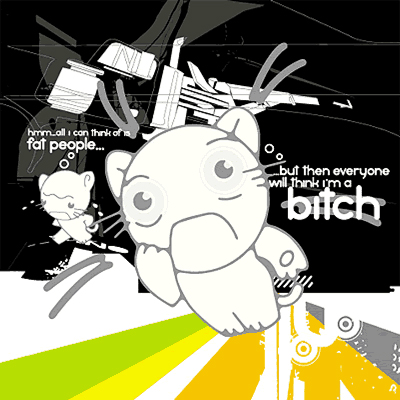
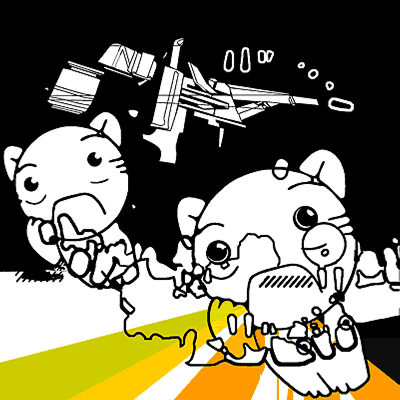
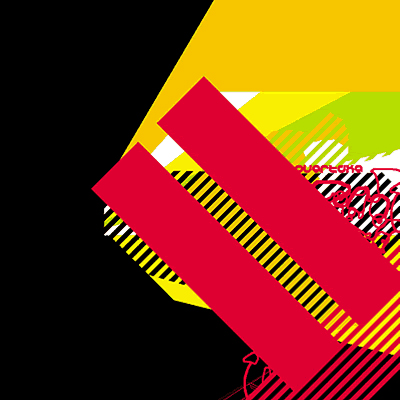

RMX The Beginning
The idea of remixing design work was something of a novelty in 2000; graphic collaborations usually entailed a linear process of refinement towards an agreed aesthetic goal, or were collaborative in the concept stages but not execution. So, the freedom to transfigure a work in any manner (from subtle to brutal) was very liberating, and engendered some new ways of working together that we may not have arrived at without having the RMX playground to laugh, cry, fight and run around in.
At the time we were disillusioned by the business of design and desperate for a visual pick me up. We chose eight themes ranging from the relevant to the ridiculous, which were then turned into the initial eight visual pieces. These eight pieces were then passed sequentially to each player, being remixed each step of the way, with each participant not seeing the previous works before it was their turn to remix.
We gathered weekly to exchange files and we recorded a meeting which was then used as raw source material to create an RMX soundtrack.
The energy and enthusiasm was palpable throughout and from the very beginning we had an emphasis on process over product.
The experience of working in such a fun and unconstrained manner led us to ponder the possibility of continuing to work in that mode. Six of the participants formed design collective, Rinzen who went on to work together for the next ten years.
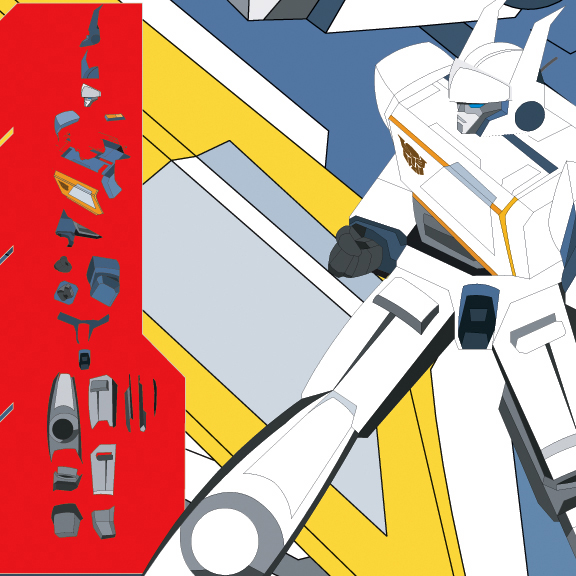
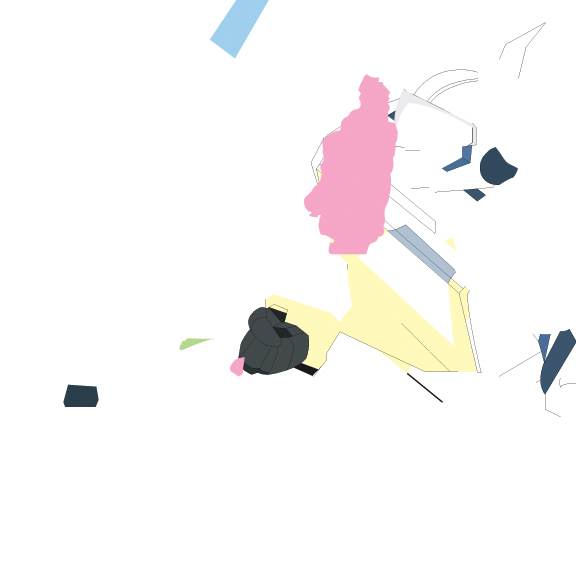
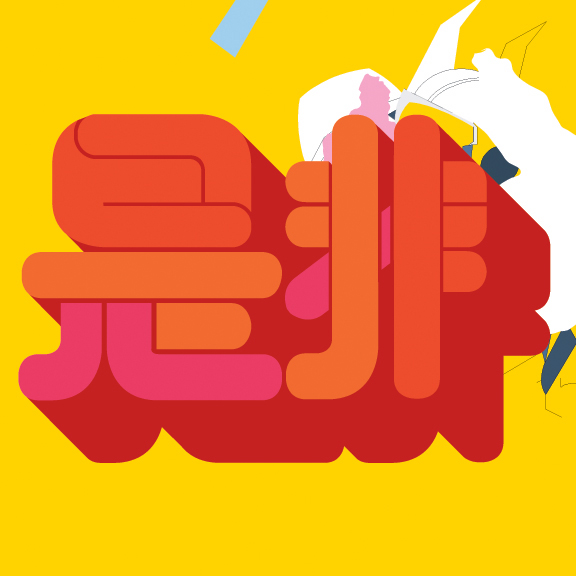

RMX
Extended Play
Enthusiasm is infectious and as word of the first RMX project spread, we gathered together a troop of keen participants – this time from across the world – Switzerland, Sweden, Germany, Japan, Hong Kong, the US and the UK.
Players were required to work only in vectors (for infinite editing and scaling, and ease of emailing) and only use fonts designed by themselves (to encourage more illustrative responses). Without the advantage of meetings to enforce the weekly deadlines, it was simply the promise of being part of something bigger than one's self that kept the momentum charging. Again, players were not aware of who proceeded or followed them and the final pieces were only revealed at the end of the process.
This resulted in some serendipitous sequences. In "Bend Your Knees" Less Rain's car was pulled apart – vector piece by vector piece by Norm – and laid out systematically across the page. When Chris Rehberger received the file it was not at all obvious what had come before. And yet, satisfyingly, he fitted the puzzle pieces back together and the car re-emerged.
It's a game and interaction is key. The "best" remixes are often not necessarily the "best" outcome as a finished product but as part of the process they delight and entertain. As a result, viewing the sequences takes time and patience – flipping back and forth to ascertain exactly what happened at what point and pondering the role of the ego in creation.
Continuing the tradition of music remixing, visual remixers recorded a cheery "hello" and these formed the basis of the soundtrack for RMX: the sequel.

